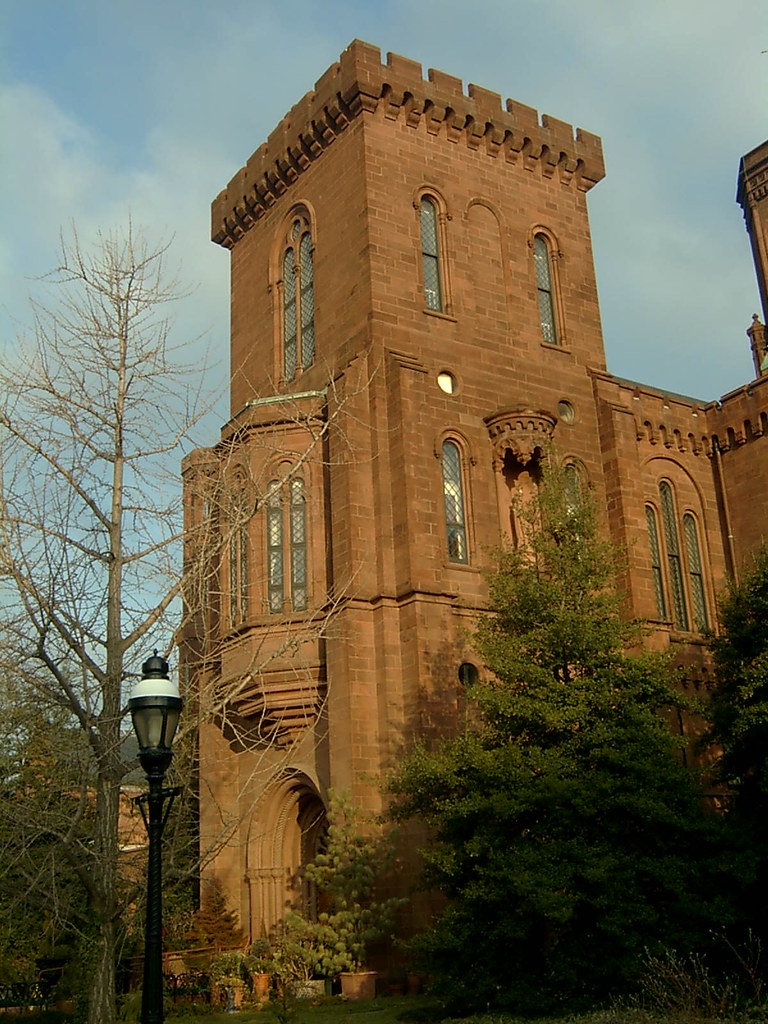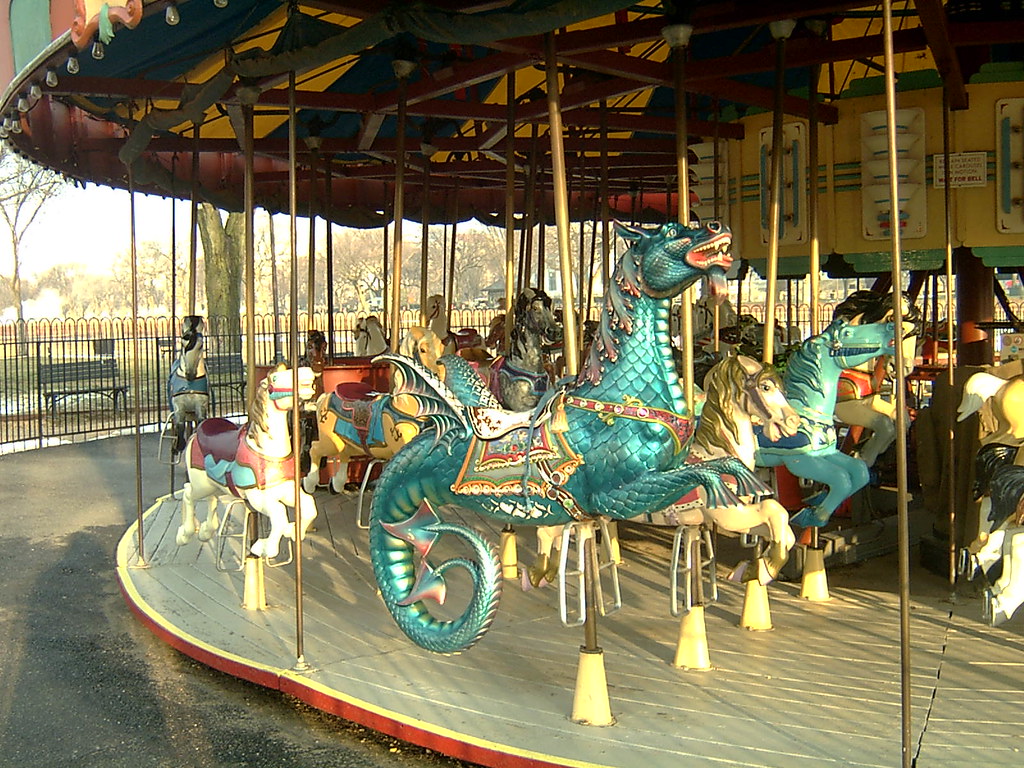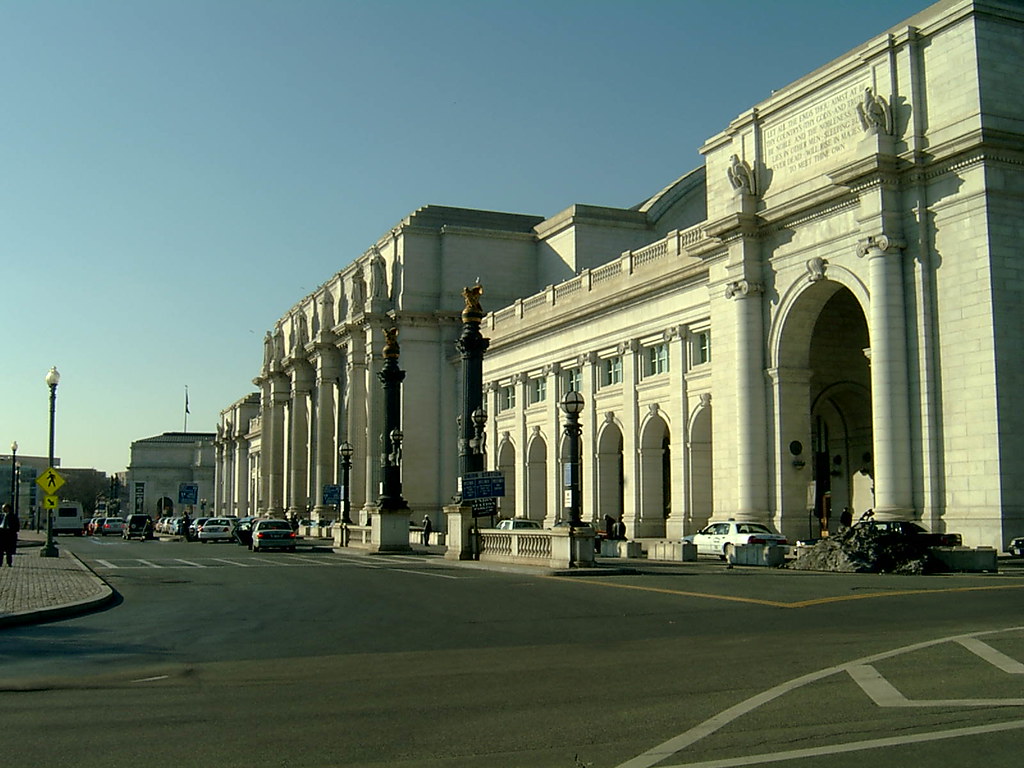

Here is the address of my new Flickr site where you can see other photographs that I have taken recently. The photo immediately above are merry-go-round animals on a carousel on the Mall near the Smithsonian Castle, Washington, D.C., this past week.
Each morning, I come in on the MARC train from Baltimore to D.C.'s Union Station (top), and then travel by Metro to L'Enfant Plaza. If I have time, I find it a special delight to walk through the Smithsonian gardens and look at the plants and shrubs and birds before getting to work about 7:30 A.M. This early schedule enables me to leave in the afternoon around 3:30 P.M. for the trek back to Baltimore.
Immediately as I ascend the elevators from the Metro I can see the white dome of the U.S. Capitol away to the east and then I walk west and north, past the white modern Federal Aviation Administration building, with its hanging model of a biplane in the lobby.
Then I cross Independence Avenue to the gardens, first passing up the winding walk on the east side of the red brick Chinese-influenced Arts and Sciences Building dating to the era of the U.S. Centennial, 1876 -- there were exhibits in the building at the time of the anniversary. I walk past the front of the building until I come toward the famous "Smithsonian Castle" (middle photo).
The Castle is the original building of the Smithsonian Institutions and was built between 1846 and 1855. The building is erected in what the Americans call "brownstone" but what I would refer to as red sandstone, so it reminds me of the native rock around my native Merseyside and so makes me feel good to see that warm and friendly stone!
Located inside the north entrance of the Castle lie the remains of James Smithson, in a marble sarcophagus in an alcove by the front door. Smithson was an eccentric English scientist and philanthropist who never visited the United States. He was born in 1765 with the birth name of James Lewis Macie, the illegitimate son of Sir Hugh Smithson (later Sir Hugh Percy, Baronet, 1st Duke of Northumberland, K.G.) and Elizabeth Hungerford Keate.
When Smithson died in Genoa, Italy, in 1829 he left a lavish fortune. His heir was his nephew, Henry Hungerford Dickinson, son of his half-brother, but Smithson stipulated that if that nephew died without children (legitimate or illegitimate), the money should go "to the United States of America, to found at Washington, under the name of the Smithsonian Institution, an establishment for the increase and diffusion of knowledge among men." True to form, Dickinson indeed did die without heirs in 1835, and Smithson's bequest was gratefully accepted in 1836 by the U.S. Congress. Interestingly and intriguingly, the reason for his generous bequest to the people of the U.S. and the world is unknown.
The eccentric Englishman's vision has enabled the world's public to enjoy what is truly one of the most splendid museums on the planet -- and even better, it's all for free!!!! You can read up more on the Smithsonian museums by following the link through the title above. Also at http://siarchives.si.edu/history/exhibits/historic/castle.htm are more historic photos of the Castle itself. Enjoy!

2 comments:
hi chris.
thanks, really cool of you to post the pictures and share. i love to see other places.
Hi Sherry
Thanks for your kind words. Glad you found the pics interesting!
Chris
Post a Comment